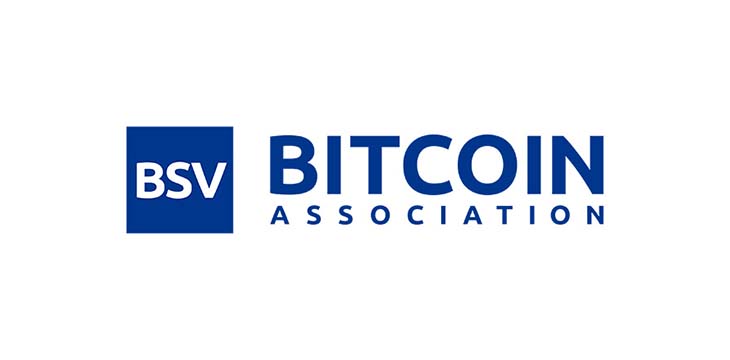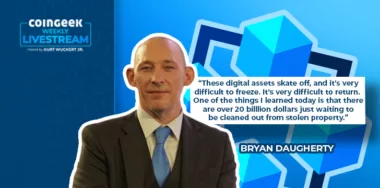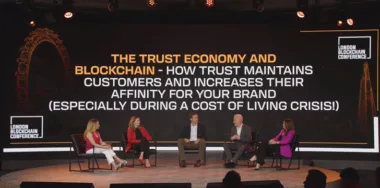Bitcoin Association is taking action to contact all relevant exchanges and miners to freeze all block rewards associated with this malicious miner and will be pursuing criminal charges against the entity/entities responsible. We encourage this miner to contact Bitcoin Association at [email protected] within 24 hours to resolve this dispute.
Situation
There currently exists a majority miner on the Bitcoin SV network producing empty blocks. This miner intentionally obfuscates their coinbase string with a constantly changing string, but is commonly identifiable by the address 1KPSTuJMCMRXrTWHfCwpiRZg1ALbJzh844 where the coinbase rewards are being sent. Alongside trying to be anonymous while mining a global public ledger, we have observed a pattern of malicious activity from this miner that has increased week after week.
This miner has been mining BSV since 2020. Prior to June of this year, this miner acted honestly and mined many blocks full of fee-paying transactions. In June of this year re-emerged on the network mining empty blocks alongside other suspicious behavior. They have steadily been increasing their hashrate on the chain for months.
In observing this suspicious behavior, Bitcoin Association has been tracking this miner for months, but their increased presence on the chain is causing network problems for honest miners and businesses that interact with the Bitcoin SV network. While producing an empty block is not inherently a dishonest act per the rules set forth in the whitepaper, steps 1 and 2 for running a node in the network gives a very clear set of instructions:
- New transactions are broadcast to all nodes.
- Each node collects new transactions into a block.
By observing their orphan patterns, we also believe the miner is not properly following steps 4 and 5:
4. When a node finds a proof-of-work, it broadcasts the block to all nodes.
5. Nodes accept the block only if all transactions in it are valid and not already spent.
Refusing to collect new transactions that are broadcast to a node into a block is inherently dishonest behavior as is outlined in the rest of this statement. As has been observed in the past week, this miner is ignoring the tens of millions of broadcasted fee-paying transactions from users and other nodes in the network in favor of producing empty blocks. Bitcoin Association has independently validated that this miner is not providing a consistent nor transparent policies. This miner is actively attacking the network in an attempt to reap block rewards while disrupting the economic activity of innocent users, businesses, and honest miners.
Alongside this disruptive behavior, there are continuous coordinated DDoS attacks on key network infrastructure and services. There have also been numerous incidents of transactions not being treated normally as well as targeted attempts to disrupt network pillars with abnormal and suspicious behavior.
Bitcoin Association has made repeated attempts to contact this miner in the past few months with no response.
The role of Bitcoin Association
As stewards of the Bitcoin protocol, the Bitcoin Association has an important role in ensuring that the protocol remains set in stone and the network remains stable. This mandate given to BA requires us to prevent rogue developers, chain-agnostic miners, and anyone else that seeks to undermine the Bitcoin network by destabilizing the system with unnecessary changes and hostile attacks. It is only by fulfilling this mandate that Bitcoin Association can ensure Bitcoin scales to be global peer-to-peer electronic cash that delivers real utility for users, developers, and businesses.
By running the Bitcoin node software, node operators agree to follow the steps to run the network as outlined in the Bitcoin whitepaper:
These steps, and thus the overarching Bitcoin protocol, give rise to incredibly resilient properties of Bitcoin:
- Robustness: The white paper clearly defines ‘nodes’ in the network as miners. Since mining requires economic investment, the network is robust through economic forces.
- Small-World Graph: Nodes form a small-world network of densely connected peers. The incentive to propagate blocks to peers as quickly as possible gives rise to one of the most densely connected global networks in existence.
- Safe Instant Transactions: By broadcasting transactions to all nodes, users can be sure that the entire mining network has a broadcasted transaction extremely quickly. They can then poll the mining network to ensure safe instant transactions.
- Scalability: There is no limit to the number of transactions that nodes can include in a block except for the inherent economic forces in the network. The network is able to scale with market forces.
- Nakamoto Consensus: Honest nodes have the ability to disincentivize dishonest behavior with the threat of not building on top of blocks that do not follow these rules.
These emergent properties of Bitcoin are no accident, and emerge only when honest miners control the majority of the network.
Despite Bitcoin being over 13 years old, miners have historically taken a very passive role in the development of the Bitcoin network. The term ‘proof-of-work’ has been used to describe miners, yet the majority of SHA256 miners attempt to perform the least amount of work possible and reap the rewards of the Block Subsidy. They do this by directing hashrate towards other SHA256 blockchains and not taking an active role in increasing the scalability of the Blockchain. It is clear that in order for Bitcoin to scale globally to be a system that rivals Visa and other payment processing networks, miners must live up to their mandate to be competitive firms that work to process an ever-increasing amount of transactions on the network. The perpetually decreasing block subsidy further pressures miners to fulfill this mandate.
‘The design supports letting users just be users. The more burden it is to run a node, the fewer nodes there will be. Those few nodes will be big server farms.’
Satoshi Nakamoto on BitcoinTalk, ‘Re: Scalability and transaction rate’, 2010-07-29 02:00:38 UTC
‘At first, most users would run network nodes, but as the network grows beyond a certain point, it would be left more and more to specialists with server farms of specialized hardware. A server farm would only need to have one node on the network and the rest of the LAN connects with that one node.’
Satoshi Nakamoto via cryptography mailing list, ‘Bitcoin P2P e-cash paper’, 2008-11-03 01:37:43 UTC
‘I anticipate there will never be more than 100K nodes, probably less. It will reach an equilibrium where it’s not worth it for more nodes to join in. The rest will be lightweight clients, which could be millions.’
At equilibrium size, many nodes will be server farms with one or two network nodes that feed the rest of the farm over a LAN.’
Satoshi Nakamoto on BitcoinTalk, ‘Re: Scalability’, 2010-07-14 21:10:52 UTC
Participation in the Bitcoin network as a node is voluntary. By voluntarily running a node in the network, nodes are required to follow the steps given in the Bitcoin whitepaper to be considered an honest node in the network. Nodes not fulfilling this mandate are to be considered dishonest nodes, and the whitepaper explains how Nakamoto Consensus can be used by honest nodes to deal with dishonest behavior.
Supporting honest miners
Bitcoin Association encourages SHA256 miners to process transactions honestly, and are available to help miners get started with mining on the Bitcoin SV blockchain. Honest miners have been demonstrating that Bitcoin can scale to serve billions of users when miners take their role seriously as professional commercial entities. Visit bitcoinsv.com to learn more.
New to blockchain? Check out CoinGeek’s Blockchain for Beginners section, the ultimate resource guide to learn more about blockchain technology.








